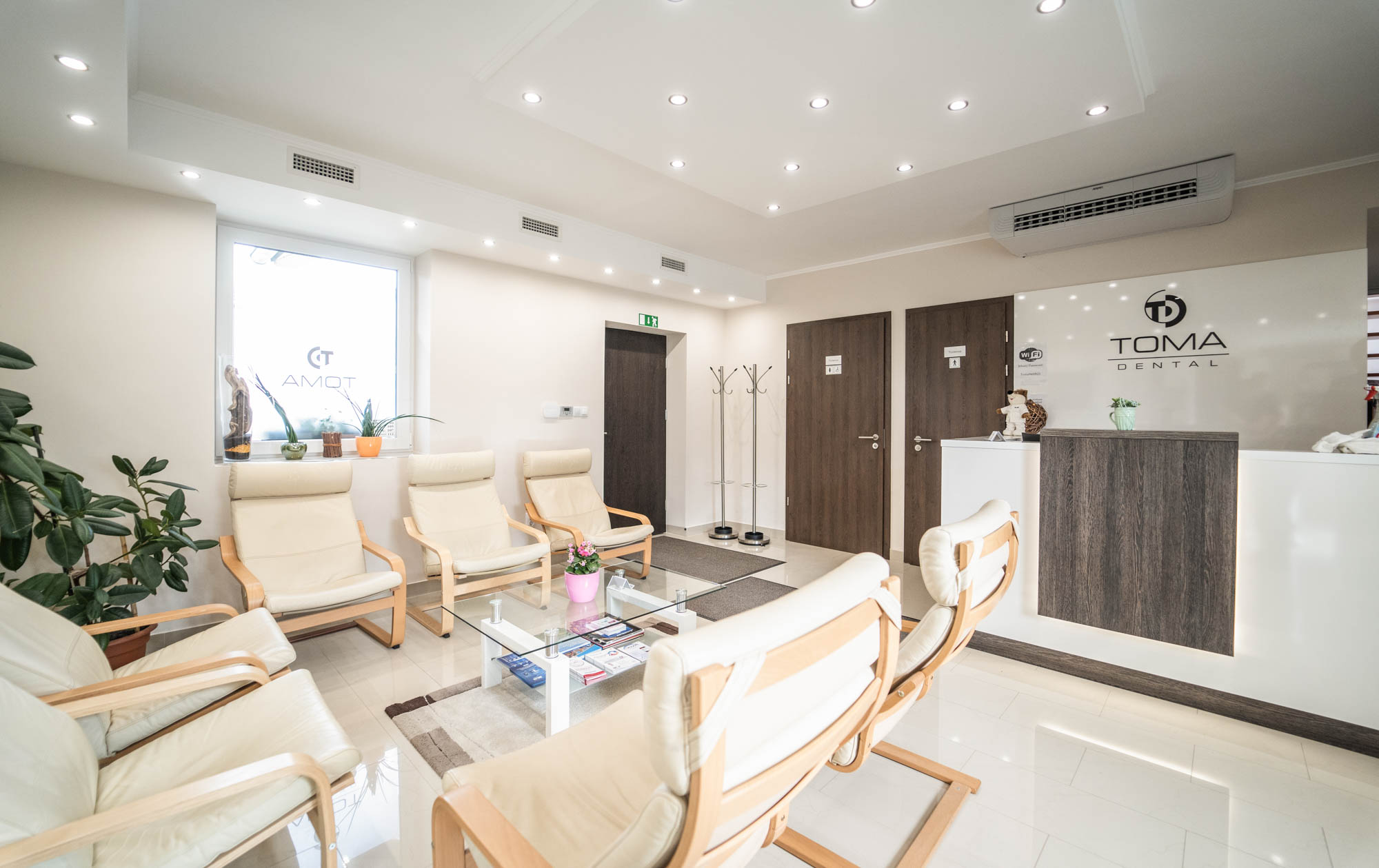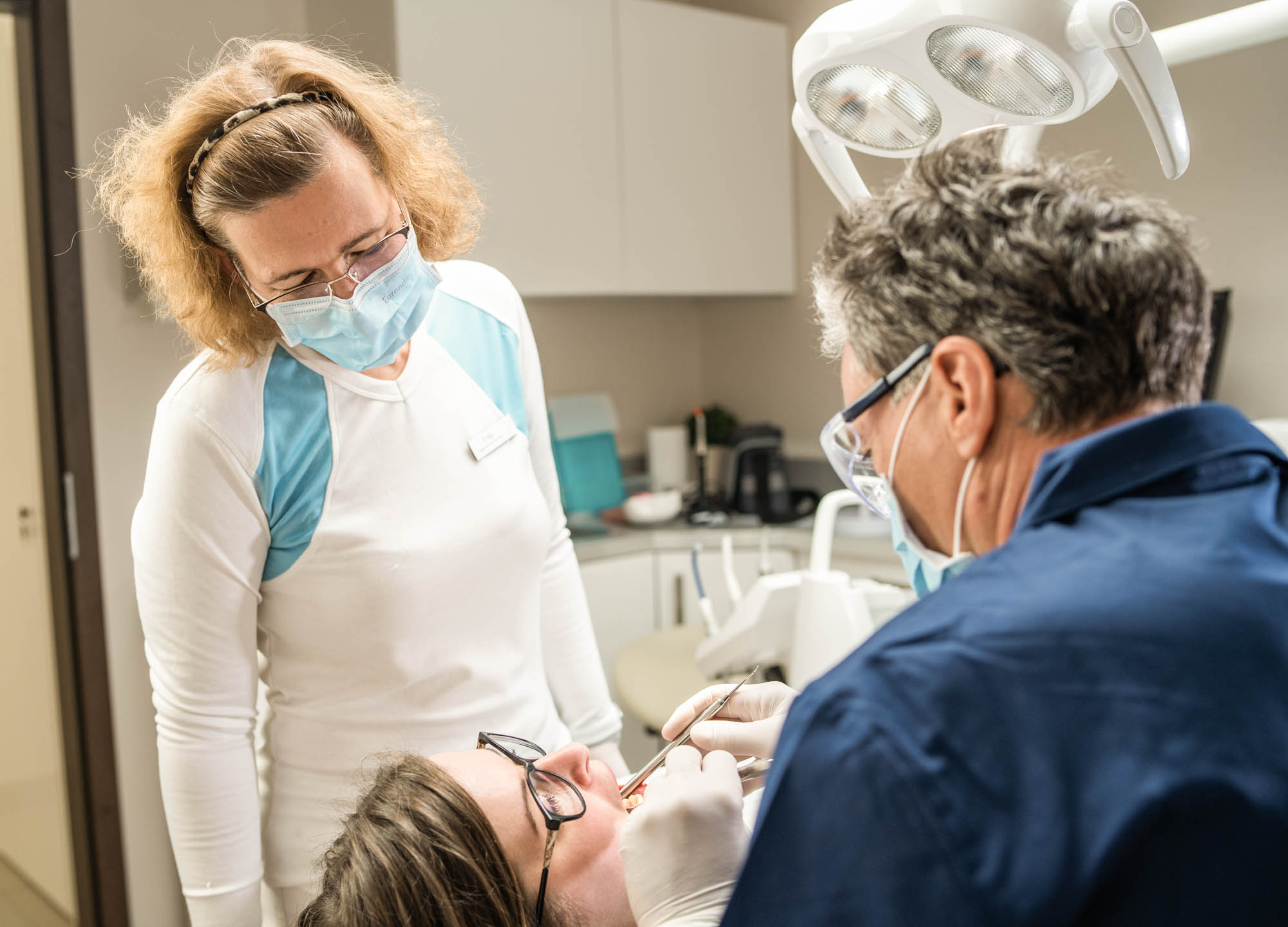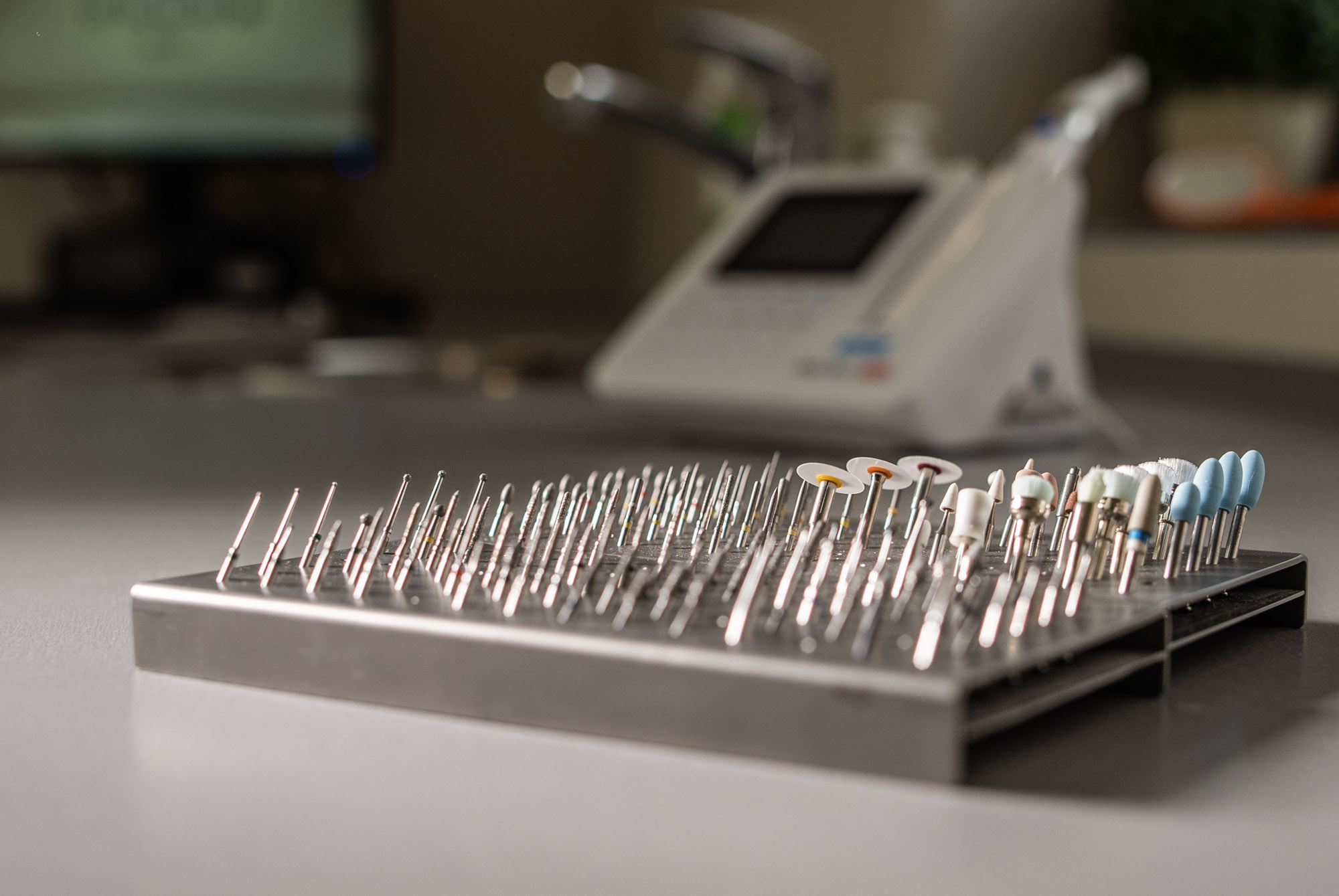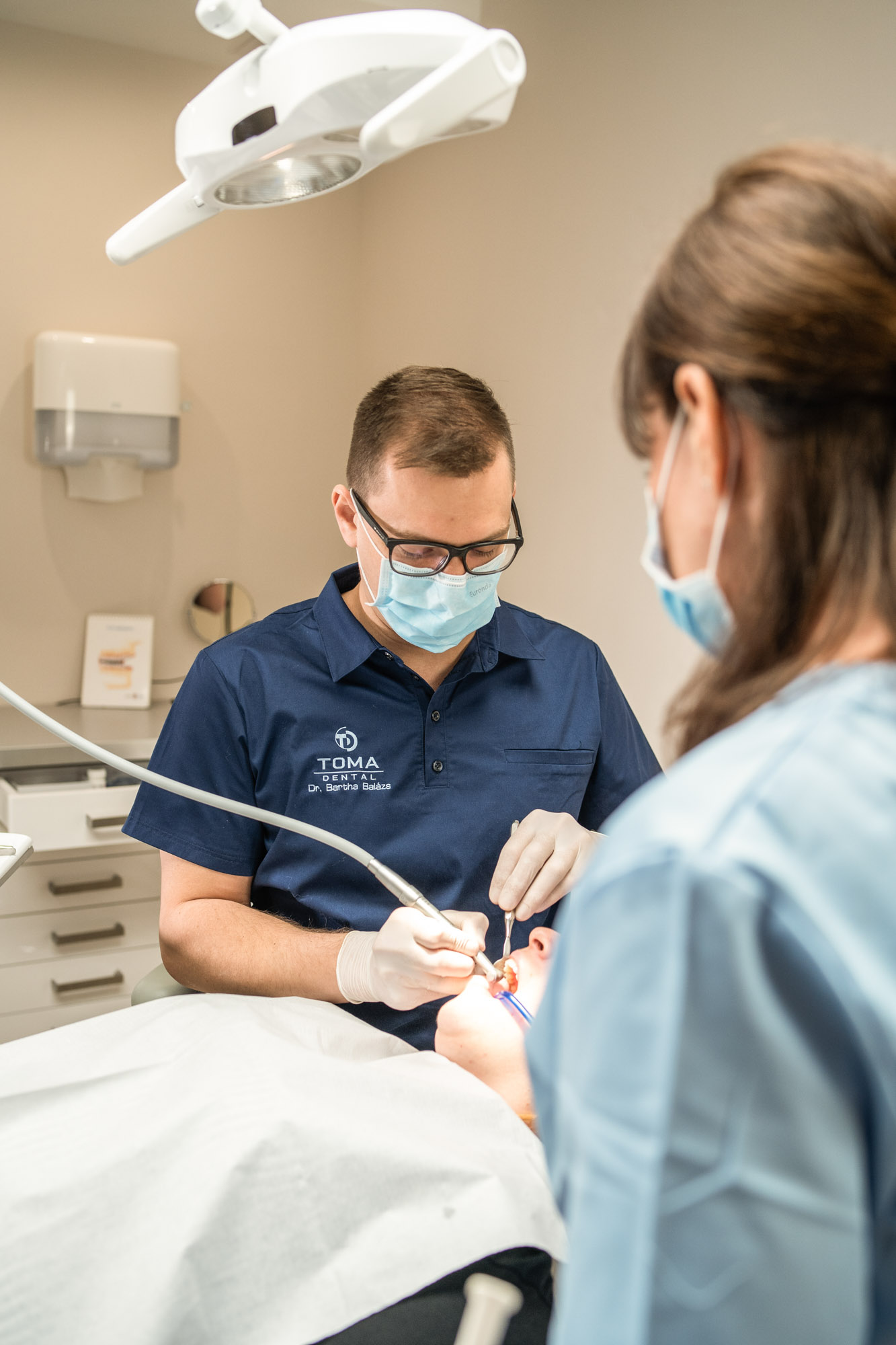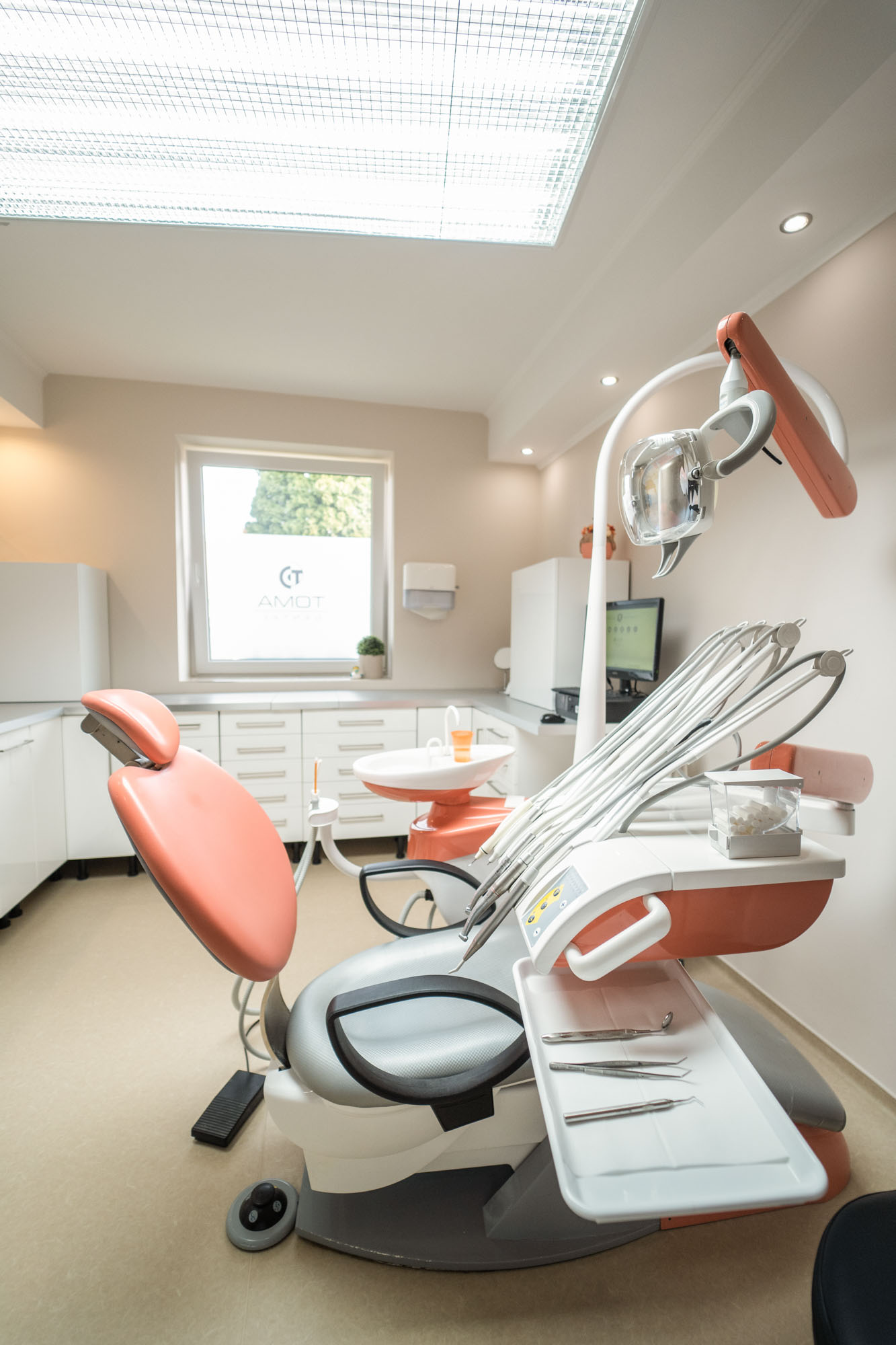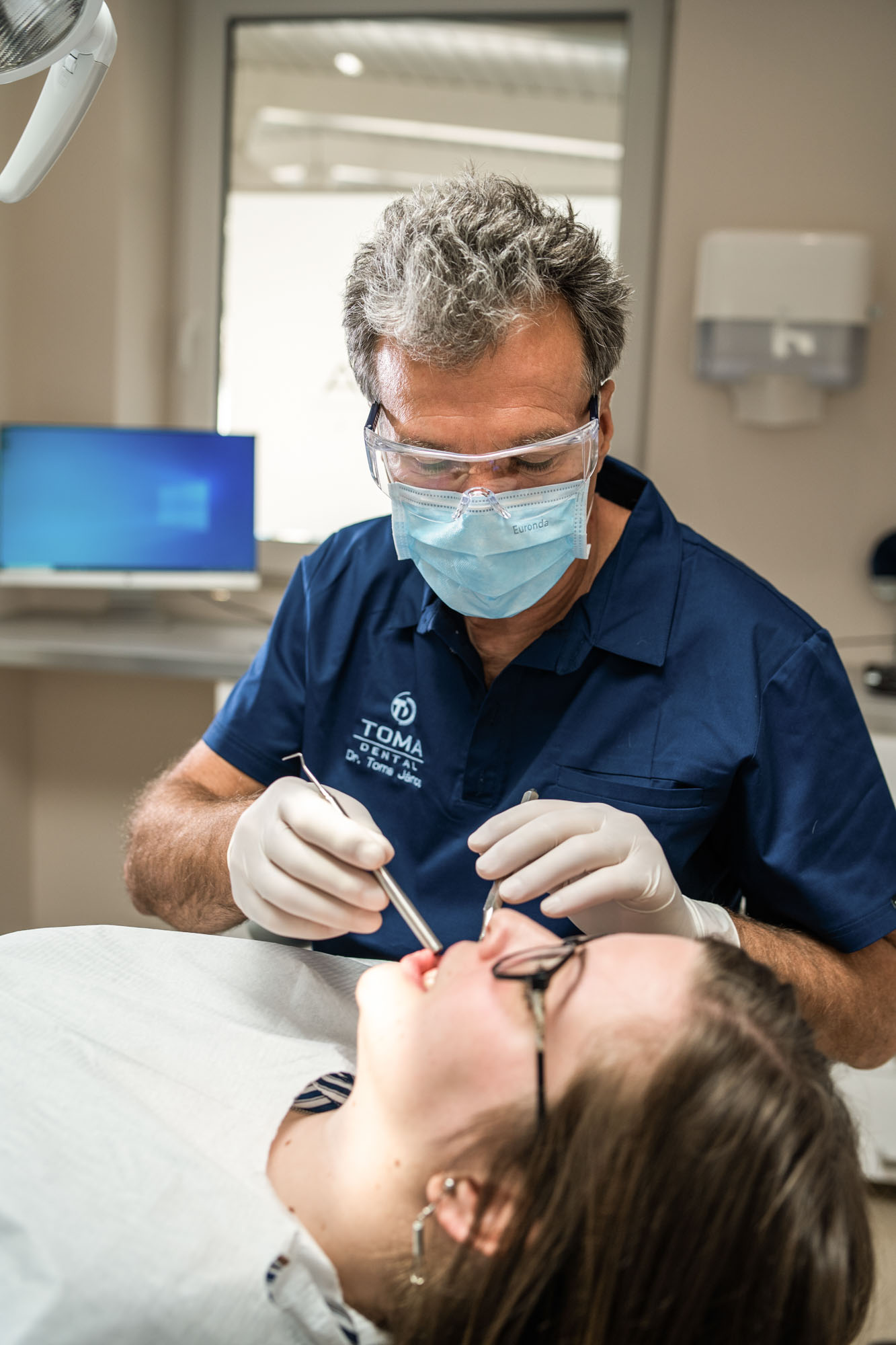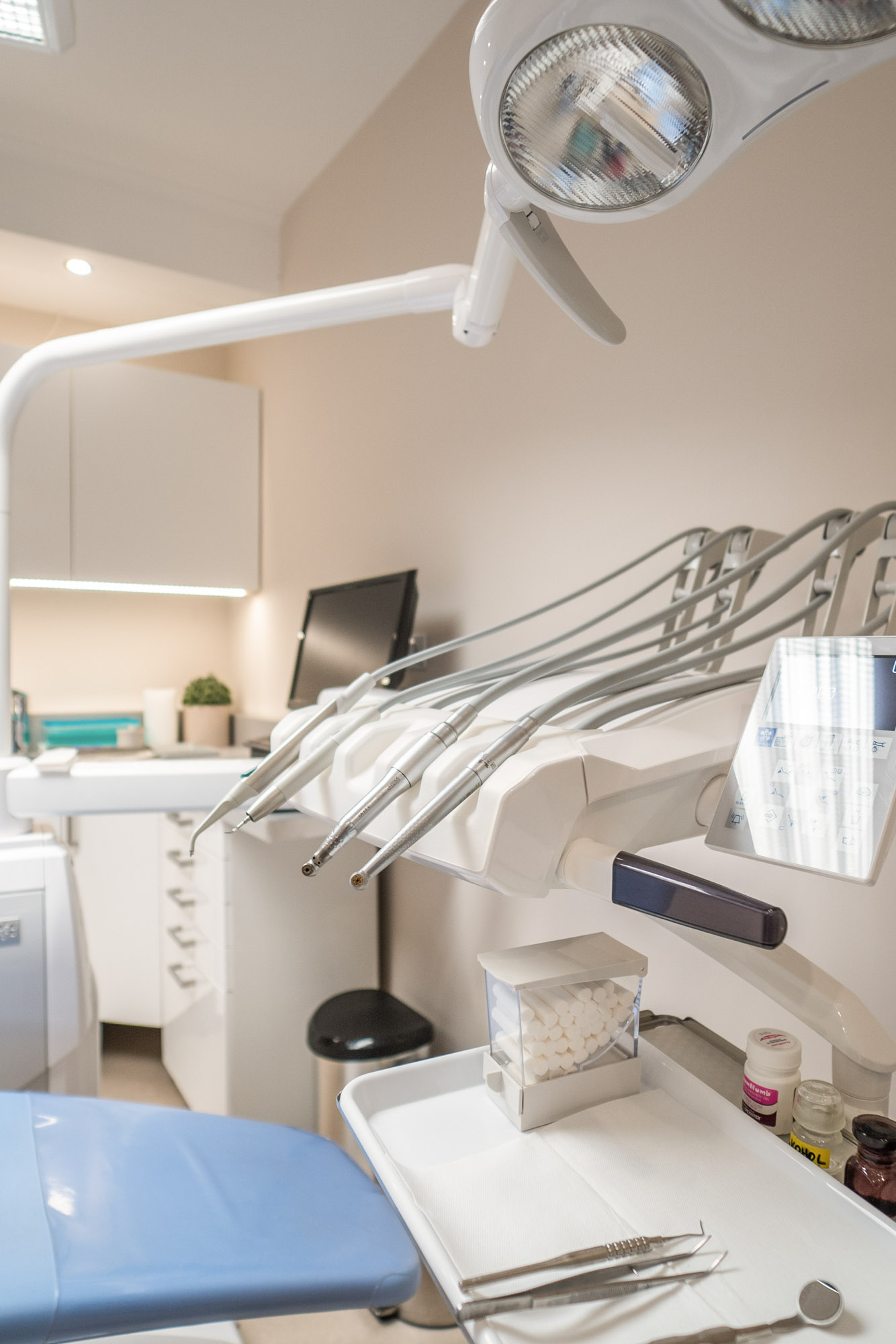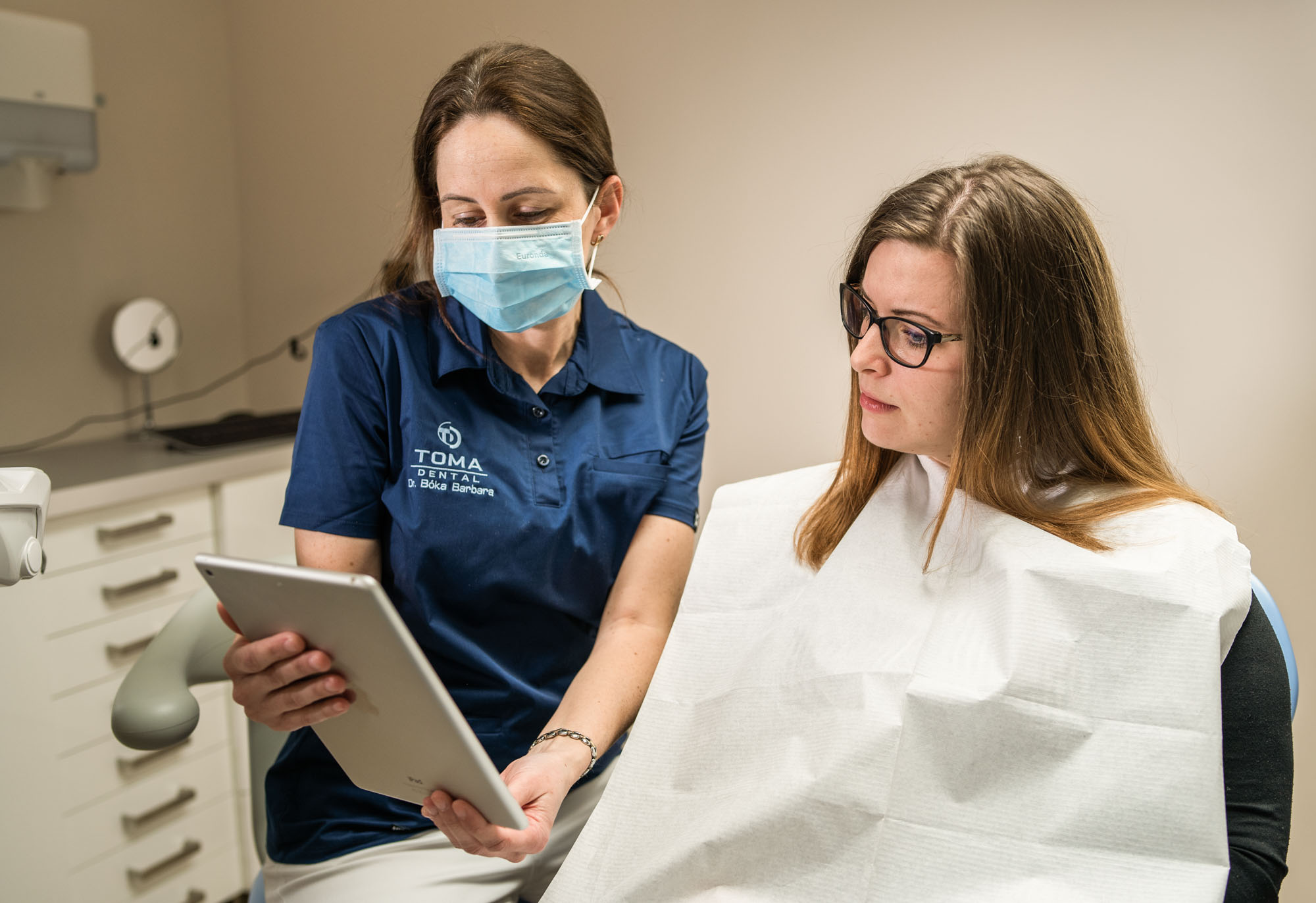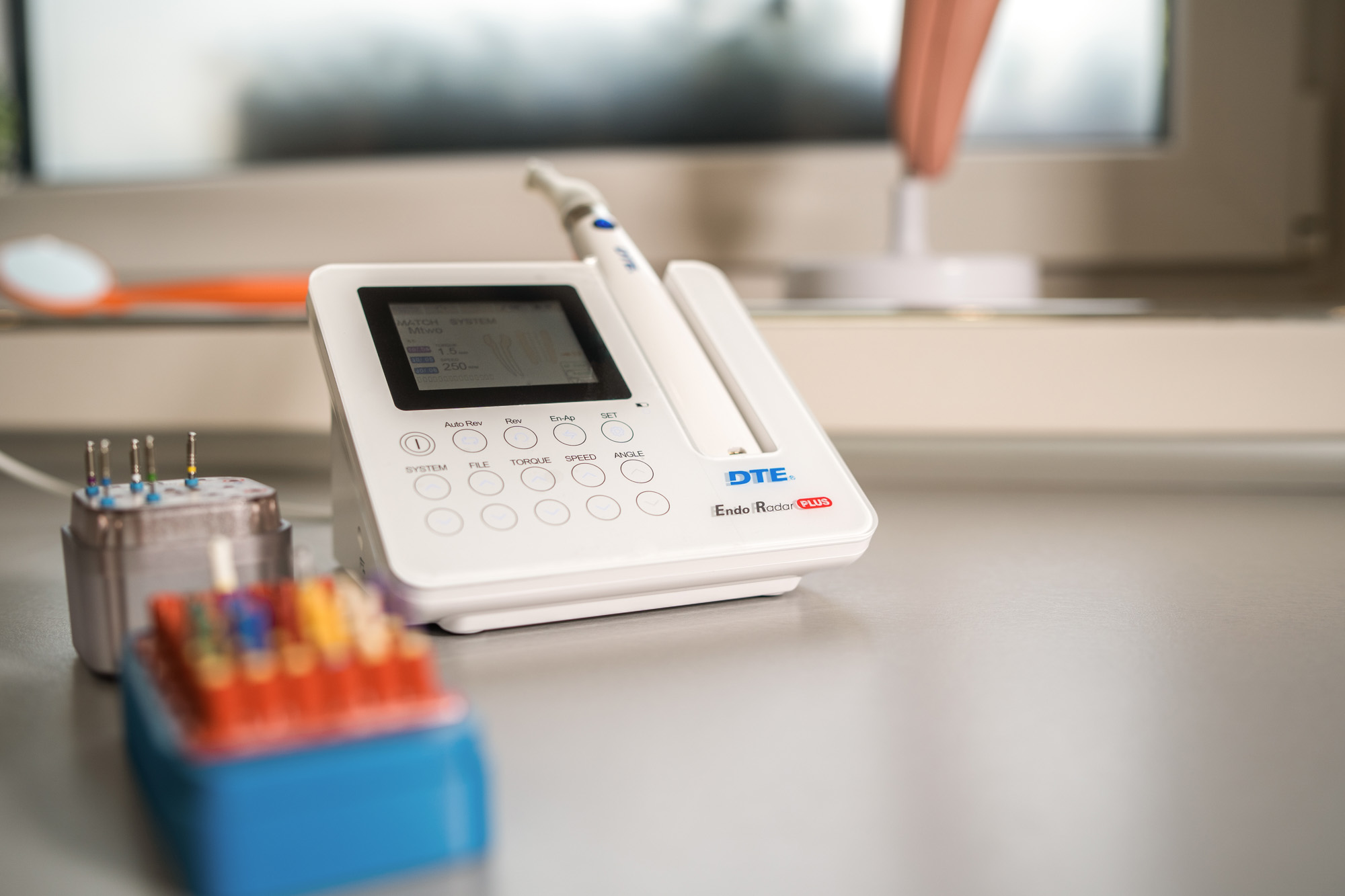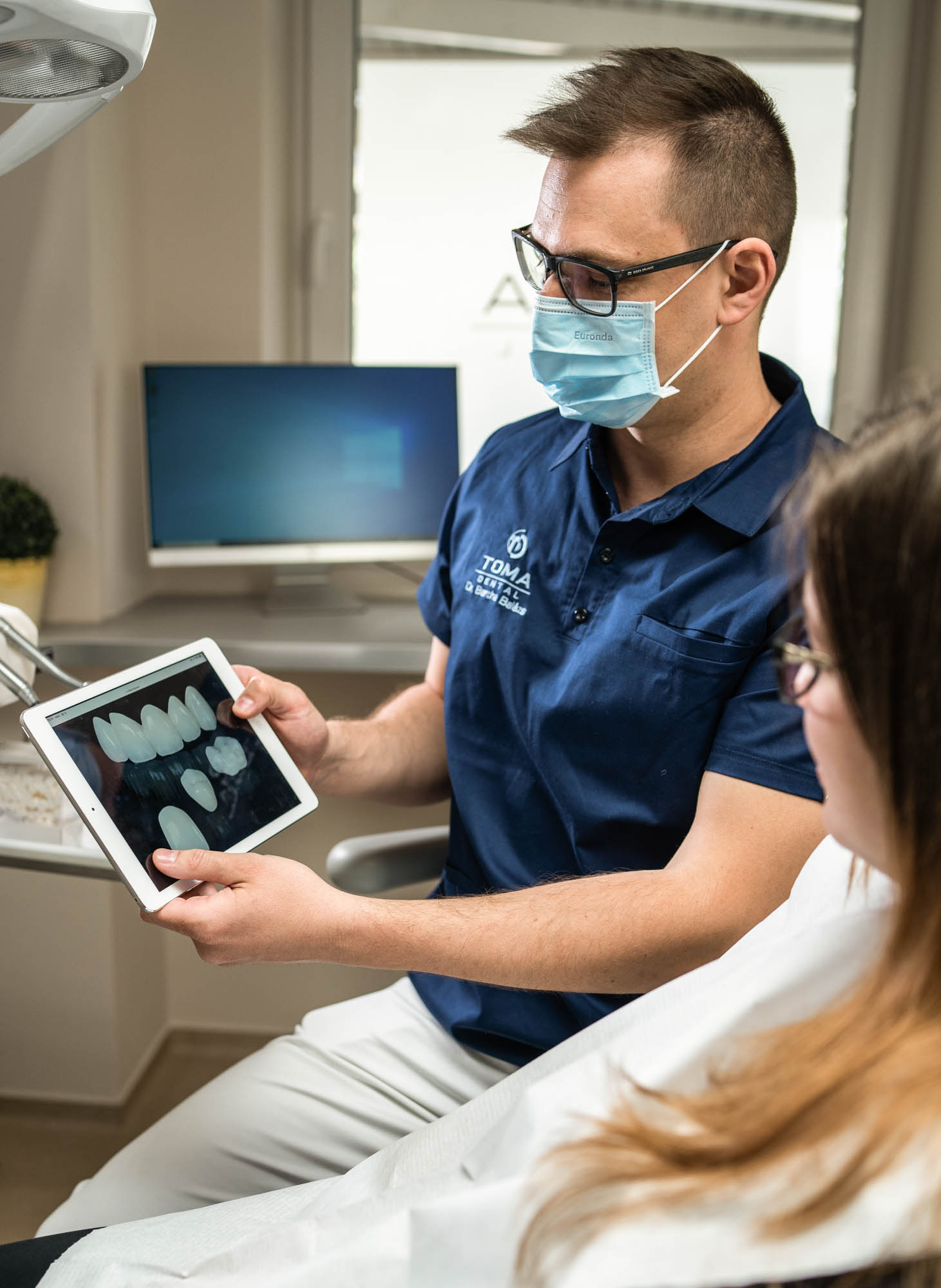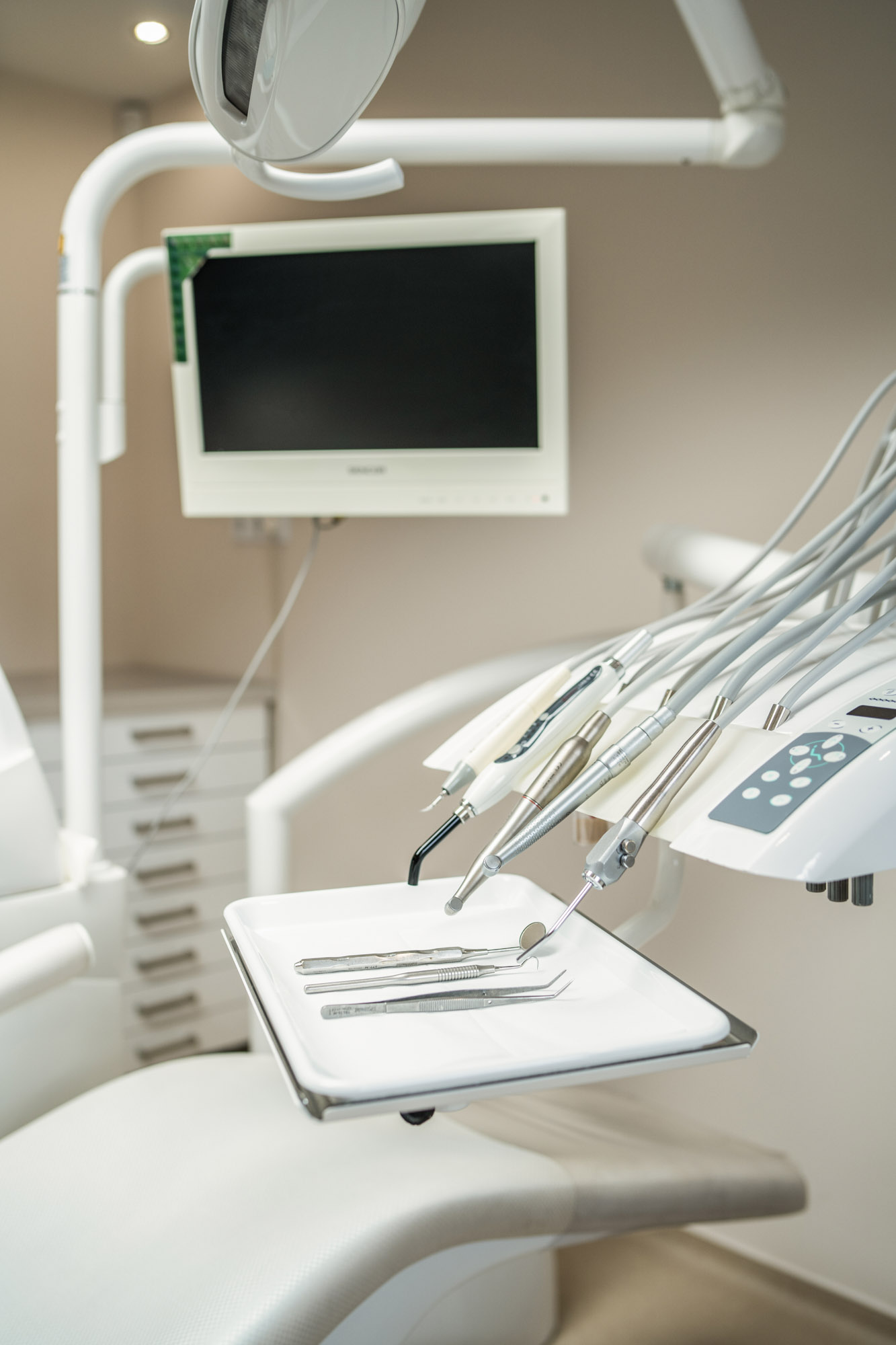A bridge is composed of a row of dental crowns. We recommend a dental crown when the patient has a significant absence of teeth enclosed by healthy, easily restored or strengthened teeth, both in front and in the back of the gap. The bridge can be fixated on the teeth next to the gap or on implants, in absence of teeth.
In case of bridges that are fixated on teeth, it is necessary to file down the teeth next to the gap and reshape them for abutment. After the initial preparations the prosthetic piece will be manufactured in a few weeks. Your new denture will offer you a perfect aesthetic experience by reproducing the look and function of the natural teeth. In case of total absence of teeth, the bridge can be built on dental implants by inserting 4 to 6 implants in advance, which can be a convenient and fix solution to restore the beauty and function of the teeth. In this case, there is no need to file down the healthy teeth around the gap, moreover the patient can safely chew harder foods also, similarly to his original teeth, thanks to the inserted implants. Besides this, the load of the bone around the gap will be uniform and there will be no risk for bone atrophy.
Whether it is a crown or a bridge, either way the patient leaves the office with teeth. After the necessary preparations, which consist of filing down the teeth, the dentist makes a temporary crown or bridge in the dental office and fixes it to the teeth at the end of the treatment. In case of inflamed gums or multiple tooth extraction, when it is necessary for the wound to heal, a dental technician will manufacture a long-term temporary crown or bridge, so You can enjoy a beautiful a functionally perfect replacement even in the process of healing.



